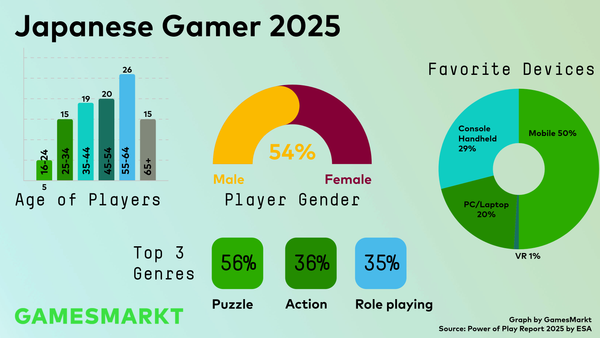How to Plan the Chinese Release of Your Game and Avoid Stress




China is a gaming market no developer or publisher aiming for success in mobile gaming can afford to ignore. In a series of three guest articles, Lana Bokay-Poltavets and Boris Burangulov from My.games share their insights and lessons learned from marketing games in China. This one is about planing a release in China.
The journey of a thousand miles always begins with a single step, and when it comes to entering the Chinese market, that step starts with obtaining an ISBN license. An ISBN (International Standard Book Number) license for Chinese mobile games is a mandatory approval issued by the National Press and Publication Administration (NPPA) of China. Without this license, a game cannot be officially released, distributed, or monetized in the Chinese market.
But if you think the process gets easier once the license is in your hands, you might want to adjust your expectations. What lies ahead is more like an adventure — one filled with scheduling puzzles and scope assessment challenges that will test your patience and planning skills.
Launching a Chinese version of your game is a complex and multifaceted project with a high degree of uncertainty. The foundation of your project is laid during the planning stage, and mistakes made here can be costly — from team burnout to delayed release timelines and the inevitable domino effect of shifting deadlines. In this article, I’ll share our team’s experiences with task scheduling and scope estimation, reflect on the missteps we encountered, and explore what could have been done differently — if only I had the ability to turn back time.
Before diving into our solutions, let me first outline the initial conditions we were working with.
If you work in game development, you’re probably familiar with the thrill of tackling complex and unconventional tasks. The more challenging the problem, the more exciting life becomes — after all, how else will you build up a trove of fascinating stories to share with your grandchildren someday? So, we enthusiastically jumped into action with a goal that was both clear and daunting: to release the iOS version of War Robots in China by the end of 2023.
From the outset, we identified four major workstreams as essential to delivering a release-ready Chinese version of War Robots or, as it’s known locally, 机甲战队:
These elements were intended to ensure the game was fully prepared for release. By April 2023, we had formed a team, collected requirements from our publisher, and began planning tasks on our end. After estimating the total scope of work, we anticipated completing the iOS version by the end of July. However, early in development, we decided to expand the scope to include an Android release as well. This brought an additional, complex workstream into play:
As a result, our timeline extended into September 2023.
We followed fairly standard methods for task scheduling and scope estimation:
We felt reasonably in control — until we weren’t. Unanticipated issues emerged, leading us to the inevitable section:
1. Misaligned Assumptions
What seems obvious to one team may not be clear to another. For instance, your publisher might assume that step A naturally precedes step B and fail to communicate this dependency.
2. Direct Communication with the Publisher
If feasible, add key team members (game designers, monetization managers, developers, QA specialists) to the publisher's communication channels early. Direct communication fosters quicker resolutions.
3. Changing Regulations
In China, regulatory changes can significantly impact your project.
Adapting a game for the Chinese market is a monumental challenge, but with careful planning, robust communication, and a willingness to learn from mistakes, it’s a challenge worth taking on.
Lana Bokay-Poltavets...
is Senior Project Manager at War Robots, My.games. Lana is a dedicated project manager at War Robots with a background in community management and business development. She holds a degree in Chinese Studies (Sinology) and an MBA in Project Management. This, paired with her deep knowledge of Chinese culture, helps her lead War Robots' release in the local market and effectively oversee cross-cultural workflows. Lana believes project management unlocks team potential. She works in gamedev because she believes in its ability to unite people and create supportive communities.
Boris Burangulov...
is Executive Producer at War Robots, My.games. With a Master’s degree in Marketing, Boris began his journey in game development as a product analyst in mobile games. He then spent three years leading War Robots as an Executive Producer, driving the game's growth and success. His expertise lies in analytics, monetization, and live-ops. In addition to his professional role, Boris is an experienced speaker at global conferences (e.g. GDC), where he shares insights on game monetization, metagame strategies and the evolving landscape of free-to-play gaming.
Never miss anything from the German, Swiss and Austrian games industry again: subscribe for free to our Daily newsletter and get all news straight to your inbox.








